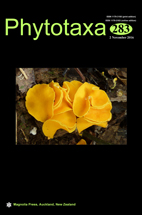Abstract
This paper presents a study of the flora of the Sierra de Zapalinamé, a protected area located in the southeast of the Mexican state of Coahuila. Field trips were conducted over 10 years, during which about 2,000 botanical specimens were collected. The material obtained in the study area was deposited in the herbaria ANSM, and partial collections in MEXU, CFNL and TEX/LL. Information on floristic inventories for the region were reviewed. A total of 110 families, 475 genera, 921 species and 9 intraspecific categories of vascular plants were recorded. Out of all the families, 3 are magnoliids, 84 eudicots, 14 monocots, 6 lycophytes and ferns, and 3 gymnosperms. The families with the highest number of genera and species, respectively, are Asteraceae (80/174), Poaceae (45/112), Fabaceae (30/65), Lamiaceae (11/31), Cactaceae (14/25), Euphorbiaceae (6/25), Pteridaceae (8/24) and Brassicaceae (18/21). The genera with the largest number of species are Muhlenbergia (14), Quercus (14), Salvia (14), and Ageratina (13). The area is home to 10 species that are endemic to the southeastern region of the state of Coahuila, along with 21 species considered rare due to their scarce occurrence in the area. Genera of Nearctic and arid zones of Mexico, along with a smaller proportion with Neotropical affinity, converge in this area. The aim of this work is to contribute to a better understanding of the flora of this mountainous region in order to strengthen the management program and ensure species protection.

